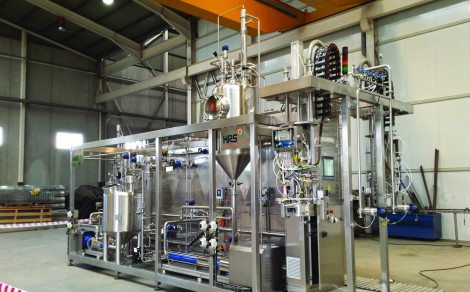- Home » Editorial » Hydraulics
The advantages of cold aseptic filling

By Matt Hale, sales & marketing director, HRS Heat Exchangers.
In recent years, aseptic technology has become well established in the food and drink sector as a filling technique. Yet some businesses are still unaware of its benefits or do not believe that it can be used with their products.
As consumers have become more health conscious, the demand for food and drink products without preservatives has increased. However, traditional methods combining sterilisation with hot filling have not been suitable for products which are increasingly sold on their ‘fresh’ and ‘natural’ characteristics, due to the effect on product quality.
In most cases, hot filling sterilises the container as the product (which is still hot from cooking or sterilising) is filled. However, the temperatures required often have unwanted effects on the quality of the product, and the heat imposes restrictions on the type of container which can be used: for example, hot filling of lightweight plastic drinks bottles can lead to distortion of the plastic.
Consequently, cold aseptic filling has become a common technique with drinks manufacturers for products including UHT milk, fruit juices, and sports and energy drinks. Its flexibility means that it is suitable for a wide range of products from fresh fruit dices and purees to marinades and dairy products. This diversity has also seen the development of a wide range of fillers and packaging types, from pouches and lidded trays through to bulk bags and intermediate bulk containers (IBCs).
Aseptic filling systems generally combine a number of elements into a single integrated production line. This integrated approach helps to ensure microbiological safety throughout the process from initial treatment through to the sealing of the finished product. The steps included in an integrated aseptic filling line (such as the HRS Asepticblock) typically include:
1. Thermal treatment
Although in theory this can be any thermal treatment which reduces harmful bacteria (pasteurisation, sterilisation or cooking), in practice the types of product which are most likely to benefit from aseptic filling are those which are pasteurised or sterilised. This step usually comprises a suitable tubular heat exchanger, such as the HRS MI, DTA or AS Series.
2. Cooling (where necessary)
Depending on the product, the production process and the packaging used, it may be necessary to cool the product following pasteurisation or sterilisation. In some situations (such as the production of cooked items like soups and sauces), this step may actually form the first part of the integrated aseptic line, receiving hot cooked product from elsewhere in the factory. In such cases another heat exchanger will be used, such as the AS Series. If cooling the product is likely to increase its viscosity, then a scraped-surface unit, such as the patented Unicus Series or R Series heat exchanger, may be used.
-
PPMA 2025
23 September, 2025, 9:30 - 25 September, 2025, 16:00
NEC, Birmingham UK -
Advanced Engineering Show 2025
29 October, 2025, 9:00 - 30 October, 2025, 16:00
NEC, Birmingham UK










